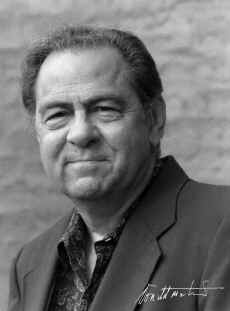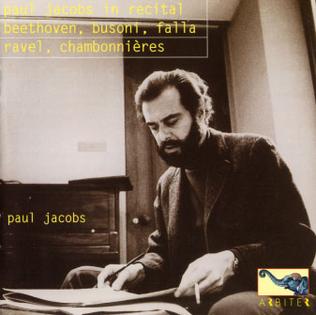Related Research Articles

Hugo Emil Alfvén was a Swedish composer, conductor, violinist, and painter.

Roger Huntington Sessions was an American composer, teacher and writer on music.

Jan Václav Hugo Voříšek was a Czech composer, pianist and organist.
Joel Krosnick is an American cellist who has performed as a soloist, recitalist, and chamber musician throughout the world for over thirty-five years. As a member of the Juilliard String Quartet from 1974 to 2016, he performed the great quartet literature throughout North America, Europe, Asia, and Australia.

Donald James Martino was a Pulitzer Prize winning American composer.

Piano Sonata No. 13 in E-flat major, Op. 27 No. 1, "Quasi una fantasia", is a sonata composed by Ludwig van Beethoven in 1800–1801.

Paul Jacobs was an American pianist. He was best known for his performances of twentieth-century music but also gained wide recognition for his work with early keyboards, performing frequently with Baroque ensembles.
Phillip Ramey is an American composer, pianist, and writer on music.

Vox Records is a budget classical record label. The name is Latin for "voice."

Beveridge Webster was an American pianist and educator.
The Symphony No. 5 of Roger Sessions was commissioned in 1960 and completed in 1964. It was commissioned by Eugene Ormandy and the Philadelphia Orchestra, and the first movement only was premiered by them in February 1964, the rest not being completed until that December.
The Symphony No. 8 of Roger Sessions was composed in 1968.
The Sonatina for Violin and Harpsichord is a three-movement, neoclassical chamber work composed by Walter Piston in 1945, that marks the beginning of his postwar style.
String Quartet No. 1 by Walter Piston is a chamber-music work composed in 1933.
String Quartet No. 2 by Walter Piston is a chamber-music work composed in 1935.
Roger John Goeb was an American composer.
Ernest Bloch's Violin Sonata No. 1 is a sonata for violin and piano. It is regarded as one of the masterpieces of the violin repertoire.

The Piano Sonata in B minor, Op.5, was written by Richard Strauss in 1881–82 when he was 17 years old. The Sonata is in the Romantic style of his teenage years. The first recording of the piece was the last recording made by the Canadian pianist Glenn Gould.
From March 1816 to August 1817, Franz Schubert composed four violin sonatas. All four were published after the composer's death: the first three, D 384, 385 and 408, as Sonatinas in 1836, and the last one, D 574, as Duo in 1851. Schubert composed two more pieces for violin and piano, in October 1826 and December 1827 respectively: a Rondo, D 895, which was published during the composer's lifetime (Op. 70), and a Fantasy, D 934, which was premiered in January 1828, less than a year before the composer's death.
In 1816, Franz Schubert composed his first three violin sonatas, D 384, 385 and 408. They were published after the composer's death as Sonatinas in 1836. These sonatas breathe an intimate atmosphere, requiring relatively little virtuoso bravura from their performers.
References
- ↑ The score indicates that the work was finished in Berkeley, California in November of that year.
- ↑ in essence they follow each other without one, and in the Edward Marks 1976 score the three movements' measure numbers are numbered consecutively rather than starting again with 1: bars 1-168, 169-230, and 231-404.
- 1 2 Dyer, Richard. "Notes to Recording of Second Sonata and Martino Fantasies and Impromptus" . Retrieved 29 January 2010.
- ↑ Prausnitz, Frederik (2002). Roger Sessions: how a "difficult" composer got that way at Google Books, page 253. Oxford University Press.
- ↑ "Olmstead Discography". Archived from the original on 5 September 2008. Retrieved 29 January 2010.
| | This article about a sonata is a stub. You can help Wikipedia by expanding it. |